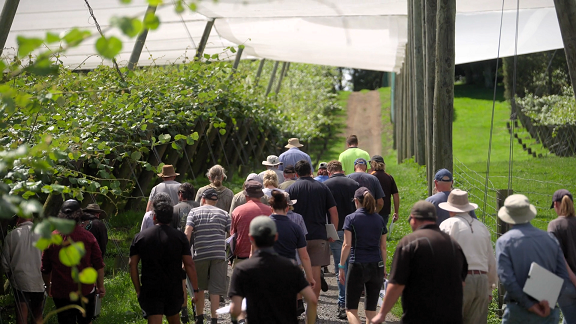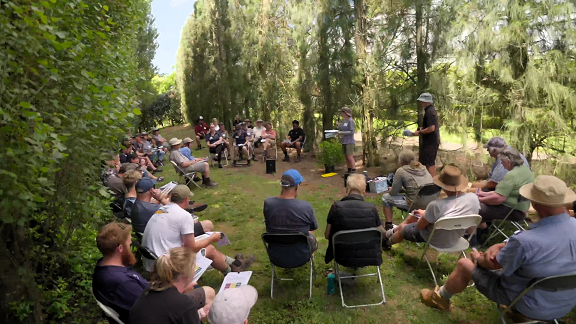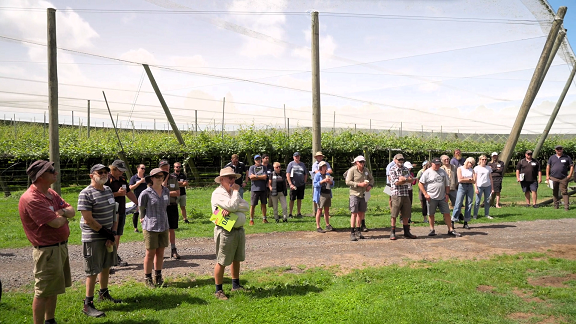Feedback from attendees at a Zespri-hosted field day sharing management practices to reduce passionvine hopper (PVH) shows most plan to adopt the strategies in their orchards.
The field day, held in December, attracted about 47 attendees, most of whom were growers, as well as orchard managers and others working in the industry. The field day shared knowledge from the Zespri-Plant and Food Research project, which aims to develop an integrated pest management (IPM) programme for use against PVH that is not reliant on agrichemicals.
The four-year Zespri research project is led by Plant and Food Research with grower participation, and is co-funded by A Lighter Touch.

Field day attendees toured the orchard as they learned about different aspects of the research.
Zespri Crop Protection and Market Access Innovation Leader Jessie Bong says a post-event survey completed by 39 attendees indicated 87% of those attending had come away with ideas to try, and almost 80% indicated they were likely or very likely to implement the field day learnings on the orchard.
For those not directly involved in orchard management, this included clear communication with the orchard manager team to implement these strategies effectively.
Jessie says the research has advanced the sector’s understanding of what works and what does not in tackling PVH.
“We have trialled new tools, refined existing ones, validated effective practices, and gathered robust science-based data supporting an integrated management plan for PVH. We would like to acknowledge all triallists involved in the research, without which the research would not have been possible.”

Attendees at the field day hear about the findings from the PVH project.
Plant and Food Research scientists Cathy McKenna and Christina Rowe highlighted the following key points from the research at the field day:
- the importance of border clearing to create an open barrier to prevent PVH spread;
- removing gaps in shelter to prevent PVH movement into orchard;
- spraying of the border, using pyrethrum and 0.5% oil for PVH nymph control in summer;
- the use of trap plants e.g. mahoe to monitor PVH activity;
- the role of native plants and their host status for PVH – planting of native species which are non-hosts not only helps with PVH but also supports biodiversity; and
- use of bifenthrin in winter just before egg hatch.
PVH is one of the key production pests of kiwifruit because of its ability to cause sooty mould on fruit. On a bad year, sooty mould can cost the industry at least $77 million per annum. Across the horticultural sector, PVH is also a pest in feijoa and passionfruit, and while biological control agents are present, they do not provide sufficient control in these crops or kiwifruit.
A grower resource from the field day is available in the Resources section of the ALT website, and can also be found on the project page, along with summaries of results from the first three years of the project.
